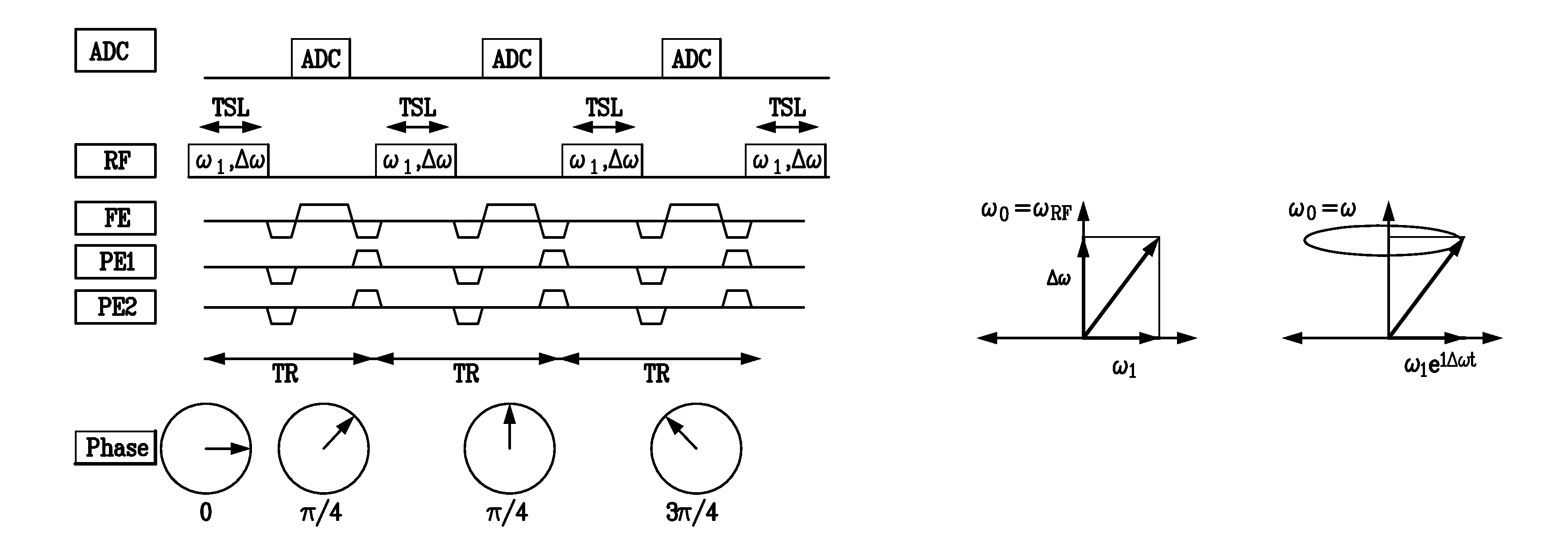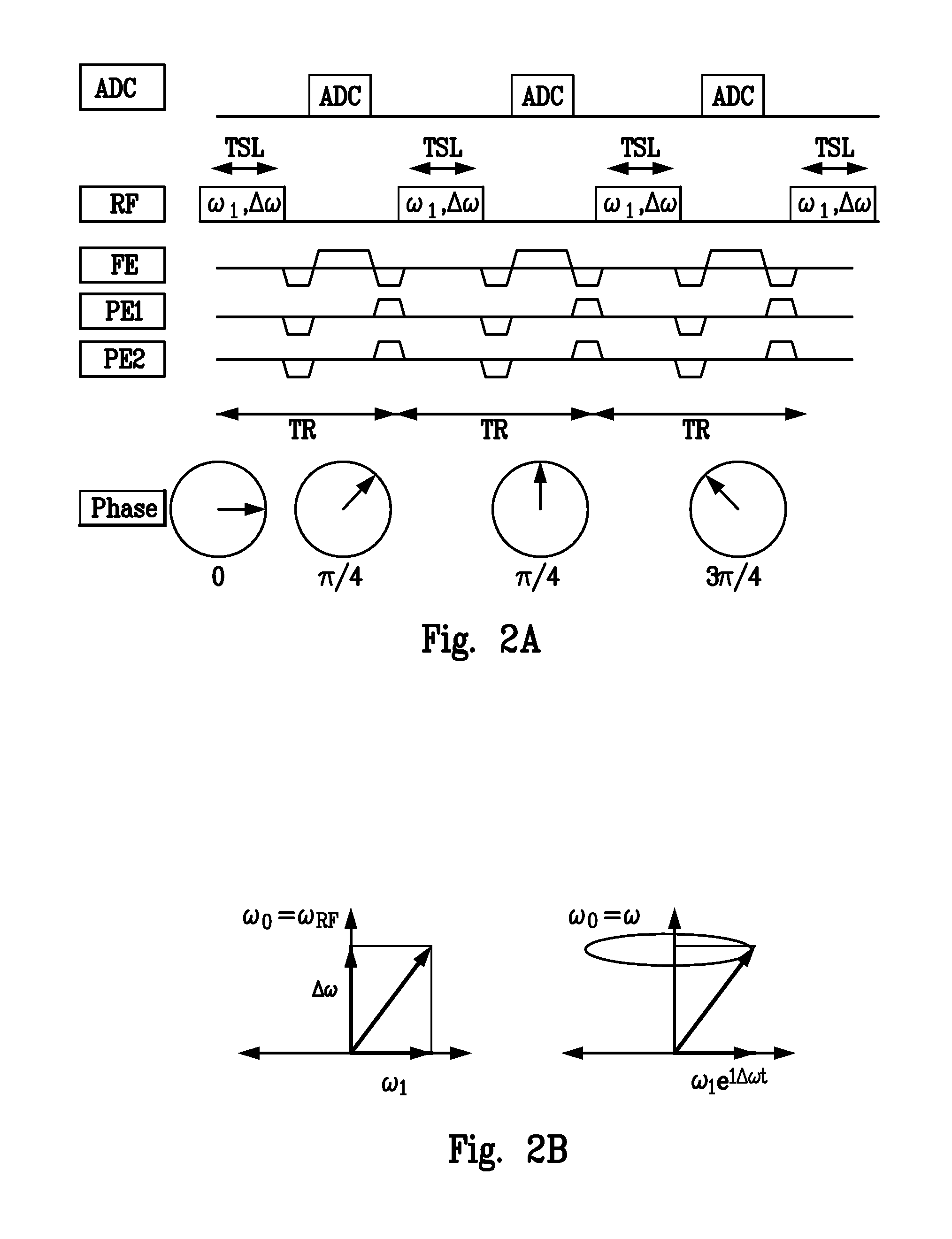Spin locked balanced steady-state free precession (slSSFP) with off-resonance spin locked pulses interleaved with imaging gradients
a free precession and spin lock technology, applied in the field of spin lock balanced steady-state free precession pulse sequence (slssfp), can solve the problem of inherently time-inefficient diagrams, achieve the effect of reducing image acquisition time, specific absorption, and improving contrast and signal to noise ratio
- Summary
- Abstract
- Description
- Claims
- Application Information
AI Technical Summary
Benefits of technology
Problems solved by technology
Method used
Image
Examples
Embodiment Construction
[0022]The invention will be described in detail below with reference to FIGS. 1-11. Those skilled in the art will appreciate that the description given herein with respect to those figures is for exemplary purposes only and is not intended in any way to limit the scope of the invention. All questions regarding the scope of the invention may be resolved by referring to the appended claims.
[0023]FIG. 1 is a block diagram of a magnetic resonance imaging (MRI) system that may be programmed to generate pulse sequences in accordance with the invention. As illustrated in block form, the main components of an MRI system are a computer 10, an RF pulse generator 20, a data acquisition element 30 including gradient coils (not shown), a display 40 and a magnet 50. A person skilled in the art will recognize that the different elements are well known in the art and thus require no explanation as to their construction. The computer 10 in the system of FIG. 1 in accordance with the invention is pro...
PUM
 Login to View More
Login to View More Abstract
Description
Claims
Application Information
 Login to View More
Login to View More - R&D
- Intellectual Property
- Life Sciences
- Materials
- Tech Scout
- Unparalleled Data Quality
- Higher Quality Content
- 60% Fewer Hallucinations
Browse by: Latest US Patents, China's latest patents, Technical Efficacy Thesaurus, Application Domain, Technology Topic, Popular Technical Reports.
© 2025 PatSnap. All rights reserved.Legal|Privacy policy|Modern Slavery Act Transparency Statement|Sitemap|About US| Contact US: help@patsnap.com



